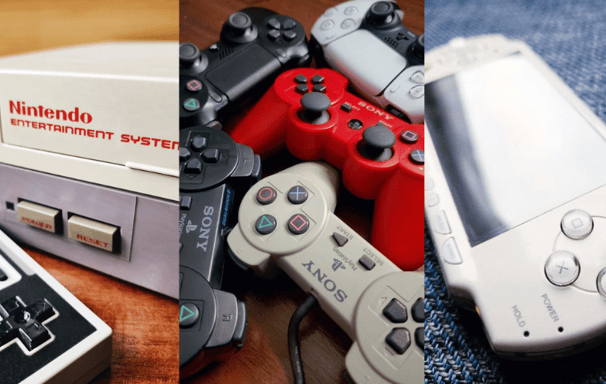5 Best Consoles to Start Your Retro Gaming Collection
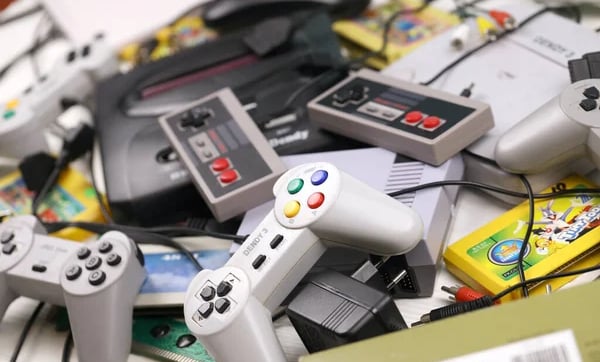

Starting a retro gaming collection is the ultimate way to reclaim the games you couldn’t afford as a kid. Now that you’ve got some cash, it's time to build your dream lineup! There's a certain magic in holding a piece of gaming history, reminding you of simpler times when your biggest concern was conquering that impossible boss. I’m talking about you, Pyramid Head!
However, choosing where to start can feel like a boss fight itself. With so many iconic consoles to choose from, the sheer number of options can be overwhelming. The key is to start smart: select consoles that offer a mix of unforgettable games, reliability, and that irreplaceable retro charm.
Collecting retro consoles is about appreciating the iconic systems that defined eras of gaming. Each console carries a unique vibe, bringing back the thrill of button-mashing battles and pixel-perfect platformers. And let’s face it—the joy of hunting down physical cartridges and disks far surpasses the instant gratification of a digital download.
So, which consoles are worth your time and money? Below are my top 5 picks to kickstart your retro collection, ranked from great to greatest. These consoles are chosen based on gameplay, collectability, and pure nostalgia. Spoiler alert: you might just want them all!
5. SNES

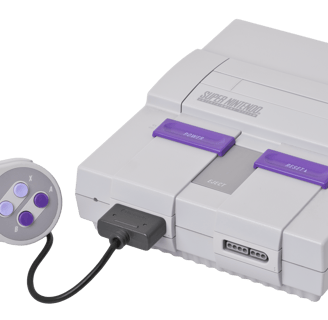
Super Nintendo Entertainment System, 1991.
Released in Japan as the Super Famicom in 1990 and as the SNES in the USA in 1991, the Super Nintendo Entertainment System is the king of 16-bit consoles. It went head-to-head with the Sega Genesis and won over players with vibrant graphics and unforgettable gameplay. Its library is filled with genre-defining titles like Super Metroid, The Legend of Zelda: A Link to the Past, Donkey Kong Country, and Super Mario World—games that didn’t just entertain but set new standards for their genres. Thanks to its custom Picture Processing Unit (PPU), the SNES delivered rich colors and advanced visual effects, making it a technical marvel of its time.
One of the console’s standout features was its Mode 7 graphics, creating pseudo-3D effects that blew minds back in the day. Games like F-Zero and Super Mario Kart introduced gameplay mechanics that would influence the industry for years. The SNES’s sound chip, co-developed by Sony, delivered iconic soundtracks—from the eerie atmosphere of Super Metroid to the uplifting melodies of Chrono Trigger. These scores were an integral part of the gaming experience, enhancing the emotional impact of each game.
The controller was revolutionary. Its ergonomic design, with four face buttons and shoulder buttons, set a blueprint that modern gamepads still follow. The SNES’s ability to handle larger cartridges allowed developers to create deeper stories, richer gameplay, and more immersive soundscapes. RPGs like Final Fantasy VI and EarthBound offered hours of gameplay that still hold up today.
4. PlayStation Portable
Though it may not be ancient, the PlayStation Portable (PSP) certainly deserves its retro badge. Released in 2004, Sony’s ambitious foray into handheld gaming delivered console-quality experiences on the go. Its sleek design and 4.3-inch widescreen display showcased vibrant graphics, putting Nintendo’s handheld offerings to shame. The PSP's multimedia capabilities were ahead of its time—playing movies, music, and even browsing the web made it feel revolutionary for a handheld device.
The PSP’s game library included must-play titles like Crisis Core: Final Fantasy VII, Metal Gear Solid: Peace Walker, God of War: Chains of Olympus, and Grand Theft Auto: Liberty City Stories. These games were full-fledged experiences that pushed the PSP to its limits. Plus, the PSP’s support for PS1 classics meant you could revisit games like Final Fantasy VII and Castlevania: Symphony of the Night on the go, adding even more value to its already extensive library.
The quirky UMD discs might seem absurd today, but they gave the PSP its own unique charm. With the ability to watch full-length movies on these discs, long trips became mini-cinema experiences. The PSP’s homebrew scene became legendary, transforming the device into a multi-functional powerhouse capable of emulating retro systems like the NES, SNES, and Sega Genesis.
For collectors, the PSP offers a fascinating mix of console-quality games, multimedia features, and an aftermarket modding community that continues to thrive. Whether you’re in it for the games or the nostalgia, the PSP is a must-have for any serious retro collection.
3. Sega Genesis
Sony PlayStation Portable, 2004.

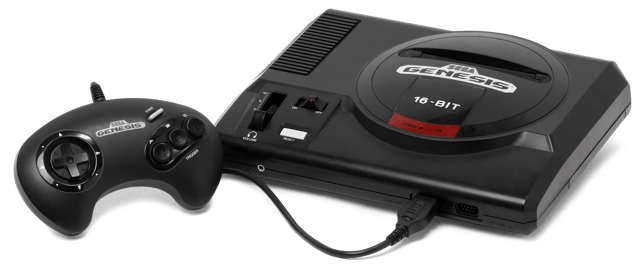

Sega Genesis, 1989.
The Sega Genesis was a powerhouse that brought speed, attitude, and arcade-quality action into living rooms. Released in Japan as Sega Mega Drive in 1988 (1989 in North America), it quickly made a name for itself with its iconic black design and bold marketing campaign that directly challenged Nintendo. The Genesis’s 16-bit processor delivered fast, smooth gameplay, while its Yamaha sound chip produced unforgettable tunes—from the upbeat Sonic the Hedgehog loops to the gritty beats of Streets of Rage.
Sega Genesis advertisement campaign in the early 90s.
Its game library was stacked with classics like Shinobi, Golden Axe, Gunstar Heroes, and Phantasy Star IV. Sports titles like Madden NFL and NHL '94 set new standards for realism, while the six-button controller became the go-to choice for fighting games like Mortal Kombat and Street Fighter II: Special Champion Edition. Sega’s willingness to allow uncensored content gave the Genesis a raw, edgy appeal that drew in older gamers.
2. Game Boy Advance
The Game Boy Advance (GBA) redefined handheld gaming when it launched in 2001. With its 32-bit processor, the GBA brought console-quality gaming to the palm of your hand, offering vibrant graphics and detailed sprite work. The GBA’s library was legendary, with titles like Metroid Fusion, Castlevania: Aria of Sorrow, and Advance Wars setting new benchmarks for handheld gaming. The ability to link up with friends for multiplayer matches in Mario Kart: Super Circuit or trade Pokémon added to its undeniable charm.
The GBA also offered backward compatibility with Game Boy and Game Boy Color games, instantly opening up an enormous library of titles. The Game Boy Advance SP, with its clamshell design, front-lit screen, and rechargeable battery, solved many of the original GBA's drawbacks. Its portability made it a game-changer for on-the-go gaming.
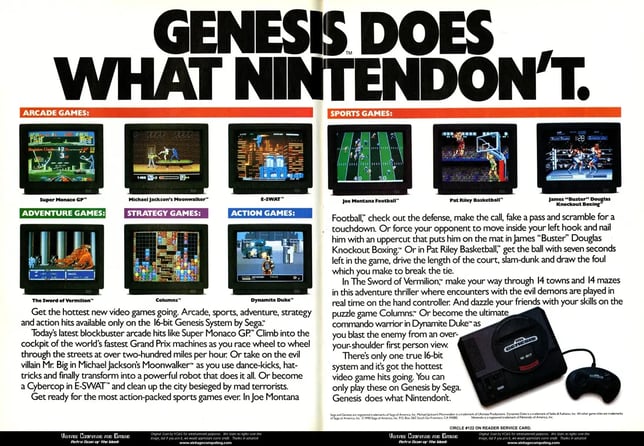

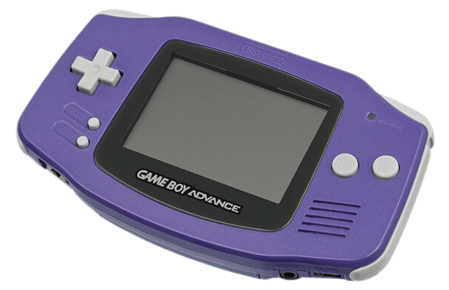

Game Boy Advance, Nintendo, 2001.
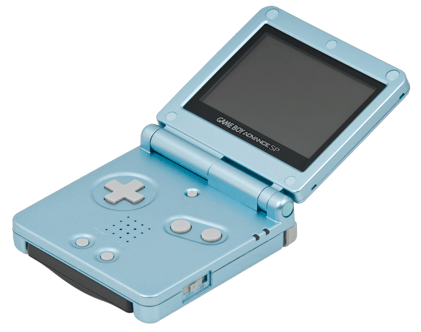

Game Boy Advance SP, Nintendo, 2003.
Whether you’re diving into The Legend of Zelda: The Minish Cap or revisiting classics like Super Mario Bros. 3, the GBA proved that handheld gaming could offer deep, satisfying experiences just as meaningful as their console counterparts.
1. PlayStation 2
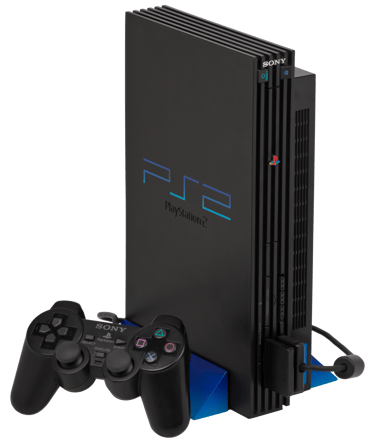

Sony PlayStation 2, 2000.
And at the very top of the list, we have the PS2. Released in 2000, the PlayStation 2 is celebrated as the best-selling video game console of all time, with over 160 million units sold worldwide. Its extensive library boasts over 4,000 titles, catering to a wide range of gaming preferences. Notable games include Final Fantasy X, Metal Gear Solid 2: Sons of Liberty, and Grand Theft Auto: San Andreas, each offering unique and immersive experiences.
In 2004, Sony released the PS2 Slim, a more compact and lightweight version of the original console. The Slim model not only saved space but also resolved some hardware reliability issues seen in the original version, making it a favorite among collectors and gamers alike. Its built-in Ethernet port also simplified online gaming, allowing for smoother multiplayer experiences in titles like SOCOM II and Final Fantasy XI.
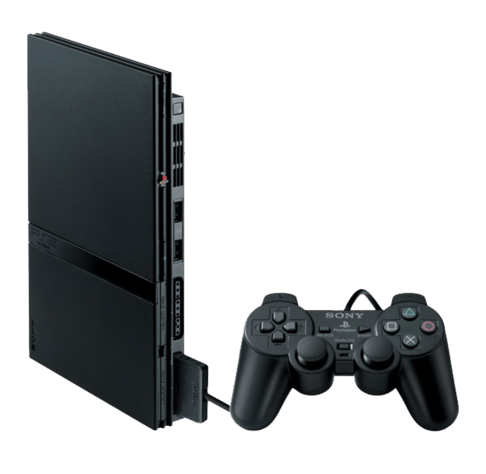

Sony PlayStation 2 Slim, 2004.
The PS2's support for both CD and DVD formats was groundbreaking, allowing developers to create more ambitious games and providing users with a built-in DVD player—a first for gaming consoles at the time. The DualShock 2 controller, known for its ergonomic design and responsive feedback, set a new standard for gamepads.
The console also ventured into online gaming, laying the groundwork for the connected experiences prevalent today. Hardware expansions, such as the hard disk drive (HDD) for select titles, showcased Sony's commitment to future-proofing the PS2.
As of early 2025, the PS2's record faces competition from the Nintendo Switch. Despite being on the market since 2017, the Switch continues to see strong sales, with projections indicating it may surpass the PS2's lifetime sales in the near future.
For collectors, the PS2 remains a treasure trove, offering a diverse range of games—from niche Japanese role-playing games (JRPGs) to blockbuster franchises. Owning a PS2 is not just about playing games; it's about preserving a piece of gaming history that significantly influenced the industry.
With all that said, retro collecting is about preserving the memories, the stories, and the iconic games that shaped the history of gaming. From the vibrant 16-bit worlds of the SNES to the ambitious library of the PS2, each console on this list offers a chance to reconnect with those unforgettable moments.
Building your collection takes time, so focus on the systems that mean the most to you. Enjoy the thrill of hunting down those rare cartridges, uncover hidden gems, and savor the journey at your own pace. After all, the real magic of retro gaming is in the experience—revisiting classics, discovering something new, and capturing that feeling of picking up a controller for the first time.
Dive headfirst into the legacy of retro classics, only here on Raised by Retro! For your daily dose of retro gaming goodness, be sure to follow The Console Quest on social media.
Sega’s bold expansion attempts, like the Sega CD and 32X peripherals, showcased the company’s willingness to innovate. Though these add-ons didn’t achieve widespread success, they’re now a badge of honor for retro enthusiasts. The Genesis is a gateway to exploring Sega's groundbreaking influence on the gaming industry, offering a mix of unforgettable titles and pioneering hardware that still impresses today.

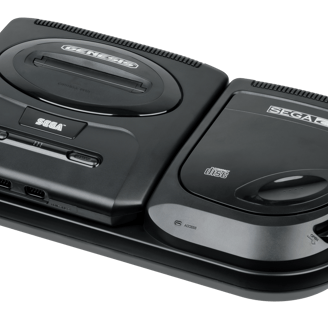

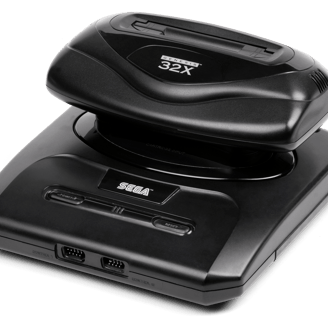
Sega CD, 1992.
Sega 32X, 1994.
Starting a retro gaming collection is the ultimate way to reclaim the games you couldn’t afford as a kid. Now that you’ve got some cash, it's time to build your dream lineup! There's a certain magic in holding a piece of gaming history, reminding you of simpler times when your biggest concern was conquering that impossible boss. I’m talking about you, Pyramid Head!
However, choosing where to start can feel like a boss fight itself. With so many iconic consoles to choose from, the sheer number of options can be overwhelming. The key is to start smart: select consoles that offer a mix of unforgettable games, reliability, and that irreplaceable retro charm.
Collecting retro consoles is about appreciating the iconic systems that defined eras of gaming. Each console carries a unique vibe, bringing back the thrill of button-mashing battles and pixel-perfect platformers. And let’s face it—the joy of hunting down physical cartridges and disks far surpasses the instant gratification of a digital download.
So, which consoles are worth your time and money? Below are my top 5 picks to kickstart your retro collection, ranked from great to greatest. These consoles are chosen based on gameplay, collectability, and pure nostalgia. Spoiler alert: you might just want them all!
5. SNES


Released in Japan as the Super Famicom in 1990 and as the SNES in the USA in 1991, the Super Nintendo Entertainment System is the king of 16-bit consoles. It went head-to-head with the Sega Genesis and won over players with vibrant graphics and unforgettable gameplay. Its library is filled with genre-defining titles like Super Metroid, The Legend of Zelda: A Link to the Past, Donkey Kong Country, and Super Mario World—games that didn’t just entertain but set new standards for their genres. Thanks to its custom Picture Processing Unit (PPU), the SNES delivered rich colors and advanced visual effects, making it a technical marvel of its time.
One of the console’s standout features was its Mode 7 graphics, creating pseudo-3D effects that blew minds back in the day. Games like F-Zero and Super Mario Kart introduced gameplay mechanics that would influence the industry for years. The SNES’s sound chip, co-developed by Sony, delivered iconic soundtracks—from the eerie atmosphere of Super Metroid to the uplifting melodies of Chrono Trigger. These scores were an integral part of the gaming experience, enhancing the emotional impact of each game.
The controller was revolutionary. Its ergonomic design, with four face buttons and shoulder buttons, set a blueprint that modern gamepads still follow. The SNES’s ability to handle larger cartridges allowed developers to create deeper stories, richer gameplay, and more immersive soundscapes. RPGs like Final Fantasy VI and EarthBound offered hours of gameplay that still hold up today.
4. PlayStation Portable
Though it may not be ancient, the PlayStation Portable (PSP) certainly deserves its retro badge. Released in 2004, Sony’s ambitious foray into handheld gaming delivered console-quality experiences on the go. Its sleek design and 4.3-inch widescreen display showcased vibrant graphics, putting Nintendo’s handheld offerings to shame. The PSP's multimedia capabilities were ahead of its time—playing movies, music, and even browsing the web made it feel revolutionary for a handheld device.
The PSP’s game library included must-play titles like Crisis Core: Final Fantasy VII, Metal Gear Solid: Peace Walker, God of War: Chains of Olympus, and Grand Theft Auto: Liberty City Stories. These games were full-fledged experiences that pushed the PSP to its limits. Plus, the PSP’s support for PS1 classics meant you could revisit games like Final Fantasy VII and Castlevania: Symphony of the Night on the go, adding even more value to its already extensive library.
The quirky UMD discs might seem absurd today, but they gave the PSP its own unique charm. With the ability to watch full-length movies on these discs, long trips became mini-cinema experiences. The PSP’s homebrew scene became legendary, transforming the device into a multi-functional powerhouse capable of emulating retro systems like the NES, SNES, and Sega Genesis.
For collectors, the PSP offers a fascinating mix of console-quality games, multimedia features, and an aftermarket modding community that continues to thrive. Whether you’re in it for the games or the nostalgia, the PSP is a must-have for any serious retro collection.
3. Sega Genesis



The Sega Genesis was a powerhouse that brought speed, attitude, and arcade-quality action into living rooms. Released in Japan as Sega Mega Drive in 1988 (1989 in North America), it quickly made a name for itself with its iconic black design and bold marketing campaign that directly challenged Nintendo. The Genesis’s 16-bit processor delivered fast, smooth gameplay, while its Yamaha sound chip produced unforgettable tunes—from the upbeat Sonic the Hedgehog loops to the gritty beats of Streets of Rage.
Its game library was stacked with classics like Shinobi, Golden Axe, Gunstar Heroes, and Phantasy Star IV. Sports titles like Madden NFL and NHL '94 set new standards for realism, while the six-button controller became the go-to choice for fighting games like Mortal Kombat and Street Fighter II: Special Champion Edition. Sega’s willingness to allow uncensored content gave the Genesis a raw, edgy appeal that drew in older gamers.
2. Game Boy Advance
The Game Boy Advance (GBA) redefined handheld gaming when it launched in 2001. With its 32-bit processor, the GBA brought console-quality gaming to the palm of your hand, offering vibrant graphics and detailed sprite work. The GBA’s library was legendary, with titles like Metroid Fusion, Castlevania: Aria of Sorrow, and Advance Wars setting new benchmarks for handheld gaming. The ability to link up with friends for multiplayer matches in Mario Kart: Super Circuit or trade Pokémon added to its undeniable charm.
The GBA also offered backward compatibility with Game Boy and Game Boy Color games, instantly opening up an enormous library of titles. The Game Boy Advance SP, with its clamshell design, front-lit screen, and rechargeable battery, solved many of the original GBA's drawbacks. Its portability made it a game-changer for on-the-go gaming.






Whether you’re diving into The Legend of Zelda: The Minish Cap or revisiting classics like Super Mario Bros. 3, the GBA proved that handheld gaming could offer deep, satisfying experiences just as meaningful as their console counterparts.
1. PlayStation 2


And at the very top of the list, we have the PS2. Released in 2000, the PlayStation 2 is celebrated as the best-selling video game console of all time, with over 160 million units sold worldwide. Its extensive library boasts over 4,000 titles, catering to a wide range of gaming preferences. Notable games include Final Fantasy X, Metal Gear Solid 2: Sons of Liberty, and Grand Theft Auto: San Andreas, each offering unique and immersive experiences.
In 2004, Sony released the PS2 Slim, a more compact and lightweight version of the original console. The Slim model not only saved space but also resolved some hardware reliability issues seen in the original version, making it a favorite among collectors and gamers alike. Its built-in Ethernet port also simplified online gaming, allowing for smoother multiplayer experiences in titles like SOCOM II and Final Fantasy XI.


The PS2's support for both CD and DVD formats was groundbreaking, allowing developers to create more ambitious games and providing users with a built-in DVD player—a first for gaming consoles at the time. The DualShock 2 controller, known for its ergonomic design and responsive feedback, set a new standard for gamepads.
The console also ventured into online gaming, laying the groundwork for the connected experiences prevalent today. Hardware expansions, such as the hard disk drive (HDD) for select titles, showcased Sony's commitment to future-proofing the PS2.
As of early 2025, the PS2's record faces competition from the Nintendo Switch. Despite being on the market since 2017, the Switch continues to see strong sales, with projections indicating it may surpass the PS2's lifetime sales in the near future.
For collectors, the PS2 remains a treasure trove, offering a diverse range of games—from niche Japanese role-playing games (JRPGs) to blockbuster franchises. Owning a PS2 is not just about playing games; it's about preserving a piece of gaming history that significantly influenced the industry.
With all that said, retro collecting is about preserving the memories, the stories, and the iconic games that shaped the history of gaming. From the vibrant 16-bit worlds of the SNES to the ambitious library of the PS2, each console on this list offers a chance to reconnect with those unforgettable moments.
Building your collection takes time, so focus on the systems that mean the most to you. Enjoy the thrill of hunting down those rare cartridges, uncover hidden gems, and savor the journey at your own pace. After all, the real magic of retro gaming is in the experience—revisiting classics, discovering something new, and capturing that feeling of picking up a controller for the first time.
Dive headfirst into the legacy of retro classics, only here on Raised by Retro! For your daily dose of retro gaming goodness, be sure to follow The Console Quest on social media.
Sega’s bold expansion attempts, like the Sega CD and 32X peripherals, showcased the company’s willingness to innovate. Though these add-ons didn’t achieve widespread success, they’re now a badge of honor for retro enthusiasts. The Genesis is a gateway to exploring Sega's groundbreaking influence on the gaming industry, offering a mix of unforgettable titles and pioneering hardware that still impresses today.




Super Nintendo Entertainment System, 1991.
Sony PlayStation Portable, 2004.
Sega Genesis, 1989.
Sega Genesis advertisement campaign in the early 90s.
Game Boy Advance, Nintendo, 2001.
Sega CD, 1992.
Sega 32X, 1994.
Game Boy Advance SP, Nintendo, 2003.
Sony PlayStation 2, 2000.
Sony PlayStation 2 Slim, 2004.
Related Stories
Join our retro gaming community and get weekly updates, deep dives, and hidden gems—straight to your inbox!
